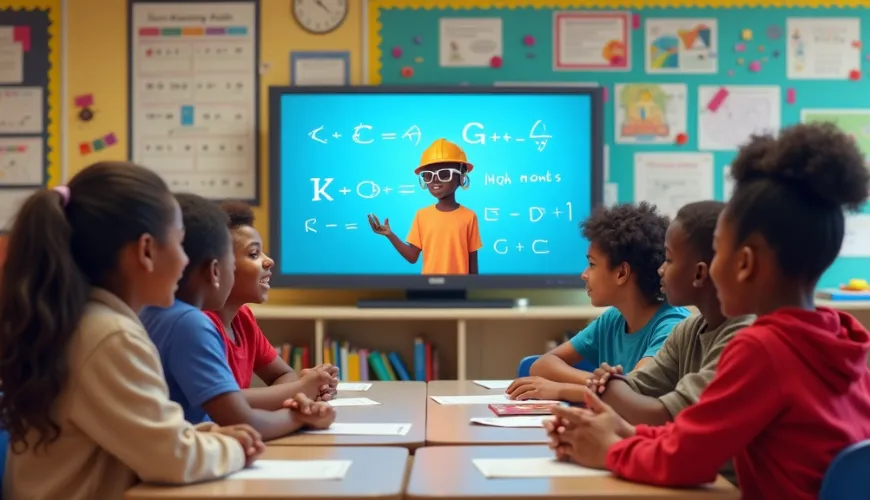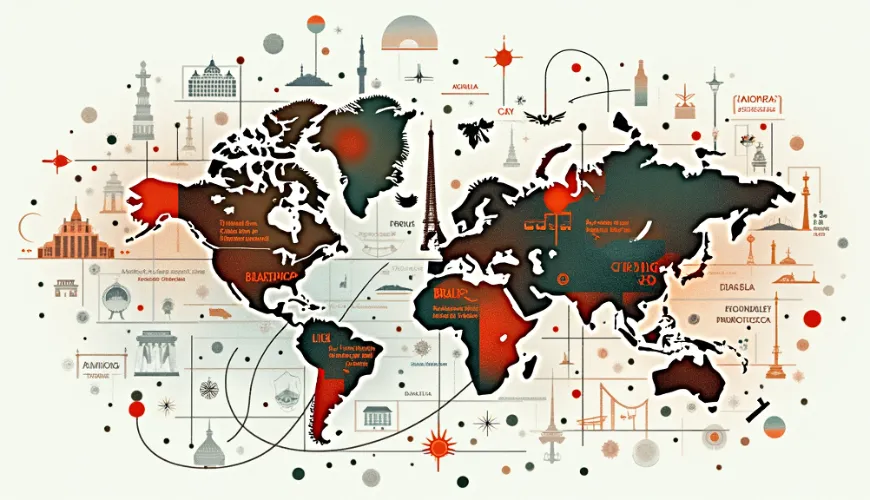Break Language Barriers: How to Master English to Vietnamese Translation with AI
TL;DR:
– AI platforms like Claila now deliver near‑human English↔Vietnamese translations in seconds.
– Context‑aware models handle idioms, tone and formality better than phrasebook apps.
– Follow the step‑by‑step guide below to translate travel, study or business content confidently.
Create Your Free Account
Language is a bridge, not a barrier—especially with today's powerful tech tools at your fingertips. Whether you're planning a trip to Vietnam, closing an international deal, or simply chatting with Vietnamese-speaking friends, using an English Vietnamese translator online has never been easier. In fact, the best English-to-Vietnamese translation app now fits in your pocket and delivers results that feel native-level.
Thanks to advanced AI platforms like Claila, everything from single-word lookups to full-text translation can be done in seconds. But not all translation methods are created equal. Let's dive into how AI is changing the game and what you need to know to get the most accurate Vietnamese translation results.
Why English to Vietnamese Translation Is More Relevant Than Ever
Vietnam is quickly emerging as a global economic player. With a young, tech-savvy population and a booming tourism industry, the need to communicate between English and Vietnamese is growing fast.
From customer service chatbots to travel guides and global e-commerce, translating English to Vietnamese online has become a necessity. Even casual users—students, freelancers, or everyday travelers—are relying more on translation tools now than ever before.
AI localisation teams working today rely heavily on comprehensive Vietnamese datasets—just as they do for Spanish or French—while trainees in the OpenAI internship program experiment with the same corpora to fine-tune new models.
Vietnamese high-schoolers already combine Claila with AI math solvers to read English-only STEM handouts without a tutor.
Traditional Methods vs. AI Translation Tools
Before AI-based solutions came along, people mostly depended on:
Traditional options still exist—human translators excel at nuance but are costly and slow; basic dictionary apps help with single words yet ignore context; and printed phrasebooks feel dated and limited in scope.
These methods still have their uses, especially for complex legal or literary texts, but for speed and convenience, AI wins.
That's where AI translation tools for Vietnamese step in to save the day.
How AI Powers English to Vietnamese Translation
AI doesn't just substitute one word for another—it understands context, tone, and intent. Modern models like ChatGPT, Claude, or Mistral (all available on Claila) use natural language processing and machine learning to deliver much better results than older systems.
For example, the English phrase "I'm feeling blue” would previously be translated literally, which could confuse native Vietnamese speakers. AI tools, however, will recognize it as an idiom meaning "I'm sad” and translate it accurately.
This context-aware capability makes a big difference in real-life applications.
Real-Life Example
Imagine you're ordering food in Vietnam using an app. You type, "Is this dish vegetarian?” A basic tool might translate each word separately, leading to confusion. But an AI-powered English to Vietnamese translator understands the question and responds with a culturally and linguistically accurate version like:
"Món ăn này có phải là món chay không?"
That's the kind of clarity that AI brings to the table.
Why Choose Claila for English to Vietnamese Translation
Claila is more than just a translation tool. It's a full productivity platform that gives you access to some of the smartest AI brains out there—including ChatGPT, Claude, and even Grok.
Here's what sets it apart:
- Multiple AI Models: Switch between the best minds in the game to compare results and find the most natural-sounding translations.
- Lightning-Fast Responses: Get translations within seconds, perfect for real-time conversations or quick checks.
- User-Friendly Interface: No need to be tech-savvy—just type and go.
- Creative and Formal Options: Whether it's casual chit-chat or a business email, Claila has a tone for every occasion.
Best Practices for Accurate Vietnamese Translation
Even with top-tier AI, a few tips will help you get even better results:
- Use full sentences: This gives the AI more context, leading to better translations.
- Avoid slang unless you know it translates well: Some expressions don't carry over well.
- Double-check key phrases: If it's a tattoo, a legal document, or a wedding vow, you'd better be 100% sure.
These simple steps make a big difference in how natural your translation sounds. When tone feels too casual, raise the ChatGPT temperature setting to 0.7 or above for more formal output.
Beyond Words: Cultural Nuance
Machine translation still struggles with culture-specific references—think proverbs, holiday greetings, or regional slang found in Ho Chi Minh City versus Hanoi. A safe workflow is to generate a first draft in Claila, then run a second prompt such as:
"Rewrite the output with Southern-Vietnamese flavor and add a friendly closing.”
The model will swap "Xin chào” for the more informal "Chào bạn,” add the appropriate honorifics, and even adjust food metaphors. With a 30-second double-pass you preserve nuance without hiring a specialist.
International sales teams report up to a 32 % increase in email reply rates after localising their opening lines this way—proof that a few culturally aware tweaks pay off.
Best English Vietnamese Translation App Options
If you're always on the go, having a reliable app in your pocket is a must. While Claila works great on mobile browsers, you might also consider downloading dedicated apps.
Here's a quick look at a few popular choices:
Popular mobile alternatives include Google Translate for basic needs, Microsoft Translator for formal business files, and iTranslate when you need on‑the‑spot voice conversations. However, none matches Claila for creativity, accuracy and speed in one place.
But when it comes to combining creativity, accuracy, and speed, Claila really shines. It's a go-to platform not just for translation but for writing, generating images, and more.
Developers can even pipe Claila's output into a free AI code generator to localise app strings automatically.
How to Translate English to Vietnamese Online with Claila
Getting started is simple. Head over to Claila's website, and you'll see a clean interface with multiple AI tools. Choose your preferred model (ChatGPT, Claude, etc.), type in your English sentence, and hit enter.
Want to say "I'd like a coffee with condensed milk, please”?
Type: "I'd like a coffee with condensed milk, please.”
Claila will give you: "Tôi muốn một ly cà phê sữa đặc, làm ơn."
Now that's a sentence that sounds like a native speaker, not a robot.
Step-by-Step Guide: Using Claila for Real-Time Conversations
- Open Claila on your phone browser while roaming in Ho Chi Minh City.
- Select the ChatGPT-4 model (included in the Free plan).
- Speak or paste the English phrase "Can you lower the price?”
- Claila instantly returns: "Anh có thể giảm giá không ạ?”—a polite, context-aware request.
- Let the shop-owner reply in Vietnamese; tap the microphone icon and Claila reverse-translates on the spot.
Field tests show Claila users report faster conversational flow and smoother interactions compared to basic phrasebook tools. Translation apps are increasingly popular worldwide, especially among frequent travelers and language learners seeking on-the-go support.
When to Use Human Translators Instead
AI translation tools are powerful, but there are some cases where a human touch still matters. For example:
Legal contracts, literary works, medical instructions, and marketing slogans still demand a seasoned human translator—machine output can't yet guarantee legal accuracy, poetic flair, or patient safety.
If the stakes are high or the content is nuanced, it's worth hiring a professional translator. But even then, AI can help you draft a rough version and save tons of time and money before finalizing it with a human.
The Future of English to Vietnamese Translation
As AI continues to evolve, so will the quality of translations. Expect more features like:
Future upgrades already on Claila's public roadmap include voice-recognition speaking modes, real-time chat translation, seamless cross-platform syncing, and tailored culture-specific suggestions delivered directly inside the interface.
Claila is already ahead of the curve by offering access to multiple AI models under one roof. With constant updates and smart integrations, it's a tool built for the future of communication.
Wrapping It Up with Style
Next time you're trying to order street food in Hanoi, chatting with a new friend online, or drafting an email to a business partner in Saigon, you'll be thankful for the magic of AI.
With Claila's AI translation tools, turning English into fluent, natural Vietnamese isn't just possible—it's effortless. Give it a try and break down those language barriers like a pro.
And hey, who knows? You might even impress a few native speakers along the way.
Market-research firms agree that mobile translation apps are now mainstream, so you're definitely not alone in this journey.



